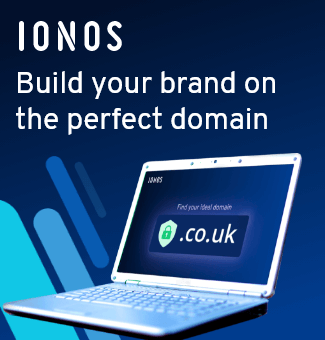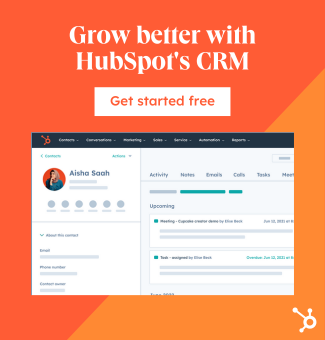An Enterprise Management Incentive or EMI is a government-backed share options scheme designed to reward your employees in a tax-efficient way. EMIs are specifically intended to help small companies grow by offering incentives to recruit and retain staff, whilst enjoying significant tax advantages. Since its launch in 2000, EMIs have become the most popular government-approved incentive scheme amongst start-ups.
This article is an introductory guide to EMIs. We’ll discuss what EMIs are and how they work, the benefits for employers and employees, who is eligible for them, and how to set up an EMI scheme at your company.
What are EMIs?
EMIs are share options that small companies with growth potential can offer their employees. By offering such incentives, small and midsize enterprises (SMEs) can boost their business health by recruiting and retaining valuable staff, whilst benefitting from considerable tax advantages.
So, what exactly are share options? This is fairly straightforward. Share options offer employees the right to buy a portion of equity (ownership) through an option agreement. The company terms should clearly detail how much the shares will cost and when and how they can be purchased.
Share options vs. shares
The main difference between share options and shares is the timing. While shares grant an immediate stake in the company, share options are given under pre-agreed conditions (such as after the successful completion of a probationary period, or the achievement of specific performance targets) and a fixed price.
Until options are exercised and turned into shares, they remain share options.
Another difference between the two is the cost. Employees normally have to pay for shares and incur tax charges on them, unlike share options. For this reason, share options tend to be the more popular choice amongst small companies.
Who qualifies for EMIs?
There are a few requirements that both employers and employees must meet to qualify for EMIs.
Requirements for employers:
- Must have fewer than 250 full-time employees
- Must not be a subsidiary company or externally controlled
- Must constitute a qualifying trade (explained below)
- Must have a permanent business address in the UK
- Must be actively trading
- Gross assets must be under £30 million
- Total EMI share allocation cannot exceed £3 million
In reference to qualifying trades, HMRC defines the below as excluded activities:
- Banking
- Farming
- Property development
- Provision of legal services
- Shipbuilding
Generally speaking, it’s likely that your company qualifies for EMIs if you don’t operate in the above industries.
Requirements for employees (including directors):
- Must be legally employed at your company
- Must work at least 25 hours a week at your company
- If an employee works less than that, their working time at your company must be at least 75% and no more than 25% elsewhere (if applicable)
- Hold no more than 30% of all company shares
You can find out more about EMI eligibility here.
The benefits of EMIs
Some of the main reasons why start-ups offer EMIs include flexibility and tax benefits. They’re also designed with growth in mind, helping new and up-and-coming companies expand by attracting new talent.
Here’s why your company should consider an EMI scheme:
- They can help you find the right people and encourage employee loyalty
- You don’t pay Income Tax or National Insurance Contributions (NIC) on them
- You can claim Corporation Tax relief on qualifying shares when the options are exercised
- You determine the conditions of your EMI scheme, which is a great way to incentivise employees to progress and hit targets
- Your competitors may not be aware of EMIs, let alone offer them, so this is an easy and impressive way to stand out from the crowd
Here’s why your current and future employees might be interested in EMIs:
- No upfront costs
- They don’t pay Income Tax or NIC when EMI options are granted or exercised
- The rate of Capital Gains Tax (CGT) is 10% (or 14% from 6 April 2025) on the growth of the share’s market value. Shares must not be sold within the first 24 months of being granted for this reduced rate to apply through Business Asset Disposal Relief
- Tax costs are lower than other non-EMI forms of payment
- They instil a sense of belonging as employees can work towards owning a stake in the company
Are there any disadvantages of EMIs?
EMIs have many attractive benefits, but there are also some potential disadvantages to think about. For example:
- The qualifying criteria could be restrictive
- The admin process of EMIs is quite precise, and records need to be clear, up-to-date, and well-managed
- If you grant options without an approved valuation from HMRC, you could face additional tax charges
- It can be difficult to estimate share valuations properly, which could lead to higher upfront costs for employees
While there are a few things to be aware of before you get started, the above points are easy to navigate with the right advisory team to help you implement and manage the scheme.
How to set up an EMI scheme for your company
Once you’ve checked that your company qualifies for an EMI scheme, you can start thinking about how you’d like the scheme to work for you and your employees. Some questions you could think about are:
- Who should receive options and at what value?
- What are the conditions that employees should meet before exercising their options?
- What types of shares will you offer?
- What is the cost involved for employees to exchange options into shares?
Next, you should file for a valuation with HMRC. This can take 2-4 weeks and provides you with a written, government-backed valuation of the share options within your EMI scheme.
Once you’ve received your valuation, you can think about the size of the share pool that will be offered to employees, their exercise options, and any special conditions.
Don’t forget, the board of directors needs to approve the granting of the options (and in some cases, they can only do so with shareholder approval).
The last step is to register the scheme with HMRC within 92 days of being granted. If you have fewer than 30 employees, you can use the employment-related securities service. If you have 30 employees or more, you’ll also need to download and complete the EMI notification template, which includes the employee’s details, the number of granted shares, their exercise price, actual market value, and the unrestricted market value on the grant date.
The completed template should be submitted via a Government Gateway account. Once HMRC has confirmed receipt, make sure you keep this for your records.
How to manage an EMI scheme
You may want to start by appointing a key contact that can answer employee’s questions about the scheme and its benefits. They’ll most likely want to know more about why the scheme has been implemented, how they can get involved, and what the costs and tax benefits are.
You’ll also need to run regular admin maintenance of your EMI scheme, which you may wish to consider the key contact being responsible for.
Amongst other duties, the person managing the administration maintenance will be responsible for managing option holders, making sure that your company remains compliant if/when your circumstances change, keeping a clear and detailed record of the share pool, and sending updates to HMRC.
Summary
If an EMI scheme sounds like the right option for you, one of the great things about them is that they’re fairly easy to set up. However, getting your head around the qualifying criteria and the admin process of registering with HMRC can be confusing if you haven’t done this before.
Your financial advisors should be able to help you with the ins and outs of EMIs, which could really help your small company grow and develop a strong and talented team.
If you have any questions or thoughts and experiences to share regarding EMIs, let us know in the comments below, or get in touch with our company formation team.
Please note that the information provided in this article is for general informational purposes only and does not constitute legal, tax, or professional advice. While our aim is that the content is accurate and up to date, it should not be relied upon as a substitute for tailored advice from qualified professionals. We strongly recommend that you seek independent legal and tax advice specific to your circumstances before acting on any information contained in this article. We accept no responsibility or liability for any loss or damage that may result from your reliance on the information provided in this article. Use of the information contained in this article is entirely at your own risk.














Join The Discussion